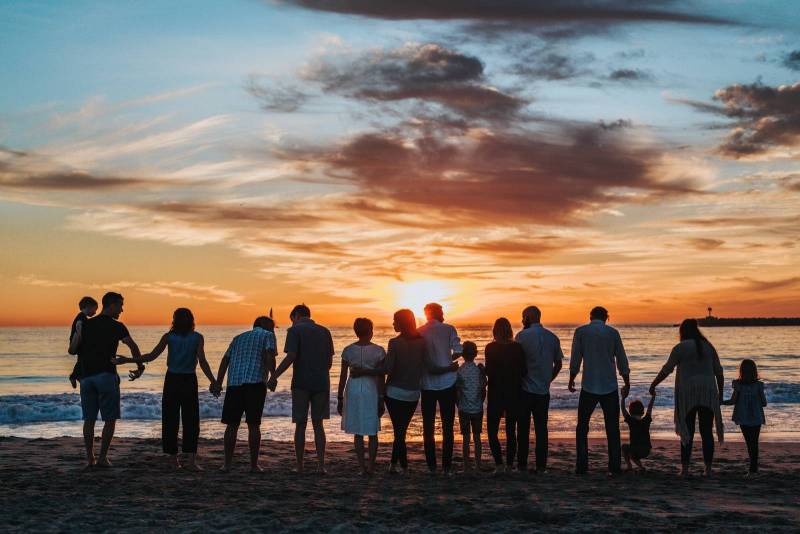What Does Ohana Mean in Hawaii?
The Hawaiian word “ohana” translates into English as “family.” It’s also a word used to refer to secondary living quarters or an accessory dwelling unit on a piece of property. An ohana is what might be called a “guest house” in other parts of the country or be considered a duplex or triplex, depending on how many individual living spaces there are. As you start your search for investment properties in Hawaii, you’re going to encounter quite a few that include ohanas on the property. You’ll see listings that include phrases like “downstairs wet-bar with separate entrance.” You’ll also see phrases like “great income opportunities” accompanying the description of these properties.

And there’s truth in that advertising; ohanas can be a great source of rental income… Provided, of course, that those living spaces have been properly permitted.
Not all of them are.
The prevalence of un-permitted ohanas is something that seems to be fairly unique to Hawaii. I’m not sure if it’s an artifact of the culture, the unique challenges of working with local officials, or just a laissez-faire attitude on the part of some owners. Whatever the cause, it’s is far from uncommon to discover that that “downstairs wet-bar/second kitchen and separate entrance” is actually an un-permitted structure that could cause you all sorts of problems down the line.
Buyer beware. Seriously.
What’s the Risk of Unpermitted Construction?
Unpermitted structures on any property present a serious issue to anyone looking to buy said property for investment purposes. For starters, financing could be more difficult with un-permitted structures. This isn’t an issue if you’re paying cash for the property, but let’s face it; the majority of buyers are going to be looking for bank loans in order to purchase a property. In the same vein, if you own a piece of land with an un-permitted ohana on it, you could have a harder time selling it, and it likely won’t sell for as much as if it had only permitted work done to it.

Unpermitted Ohanas Can’t Be Included in Total Square Footage
In a similar vein, unpermitted structures cannot be used to calculate the total square footage of the property. This is why the appraisal value estimate on the house is affected. Too, the appraiser cannot count that square footage for potential rent income (this comes into play with a business loan on a rental property).
Technically, if you DO purchase a property with unpermitted structures on it, you can enter into the process of trying to get it permitted. Unfortunately, this means you’d then have to dive headlong into what could be some very challenging work. For example, if there’s sheetrock on the walls, then you’d have to open the walls up for an inspector to check and make sure the building was framed properly. All this translates into more money spent on this “great investment opportunity,” and at the end of the day, there’s no guarantee that you’ll get the building permitted. It can technically happen, but speaking personally, I’d rarely advise my clients to go this route.
The Legal Issue with Unpermitted Ohanas
Then there’s the part where unpermitted structures are actually illegal. By law, such structures either need to get permitted, or they need to be torn down. It’s a law that isn’t always rigorously enforced — which of course plays a part in the prevalence of such structures on the islands — but it is illegal nonetheless. If you have an unpermitted structure on your property, regardless of whether you build it yourself or just bought it as-is, it is a violation of Hawaii state law and could leave you with a huge liability. Imagine if you had your property rented out and there was ever a catastrophic structural failure with the unpermitted unit, you can bet a big lawsuit or worse would be coming your way.

Do Your Research on Unpermitted Dwellings
This is becoming such an issue in Hawaii that I’ve heard talk from several local Home-Owner’s Associations about how they intend to start enforcing rules that demand a new inspection of any property being sold within the HOA’s purview. They’re doing this simply to ensure that there’s no un-permitted work that’s been done before the property gets sold. Imagine what a disaster you’d be facing if you’d bought a property in that HOA’s area with an un-permitted ohana on it. You wouldn’t be able to sell it again until you either tore it down — probably significantly reducing the supposed value of the property — or brought it up to code — a lengthy, costly process with no guarantee of success. This is what we in the business would call a “nightmare scenario.”
Unpermitted Ohanas are Ultimately a Huge Liability
Unpermitted work is sadly common in Hawaii across the islands. So when you see a listing touting “multi-family dwellings” or the like, you need to be careful. It’s always a wise move to have your Realtor check into the permits on the buildings — regardless of whether or not they are ohana — because if you discover any of the buildings to be un-permitted, it can present a huge liability risk. For the reasons listed above, I almost always advise my clients to not try and purchase property with un-permitted buildings on them. I firmly believe it just places your capital in too much unnecessary risk. There is plenty of good, solid, permitted property on the islands. My advice is to stick to the safer investments and not to dabble in the gray areas. It’s just good business sense.
Want to Know More?
Whether you are new to real estate or you’ve been doing this for a long time, Hawaii is different than most other states. Getting help from an industry expert is really the best way to go. If you ever have a specific real estate question, just send me a quick email, call, or text. I love talking real estate, and I’m happy to help, no strings attached.
Don’t miss out; join my email list, and I’ll send my helpful Hawaii real estate blogs directly to you!
Click here to join my email list
Aloha,
Tom
Further Reading
Is the Hawaii Real Estate Market About to Crash?
Thinking of Getting a Home Built in Hawaii? Read This First
Are Realtors in Hawaii Really Worth the Money?
Don’t Buy A Vacation Rental In Hawaii Until You Read This
Is Now a Good Time to Buy an Investment Property in Hawaii?
Should I Buy A Vacation Rental Or Long-Term Rental In Hawaii?




Gabe Venturelli
February 11, 2021
Thanks for the intelligent read and great insight!
What if Ohana units were more easily approved to be a deeper source of affordable housing alternatives in those communities in need?
Anonymous
September 8, 2021
I live at 75-5943 Pumehana Place in the Hillcrest area.
The residence is a two-story dwelling. However. When the pandemic hit and the owner’s boyfriend wasn’t able to return home to Canada with her she put up an illegal dwelling which is blocked by 5′ fence.